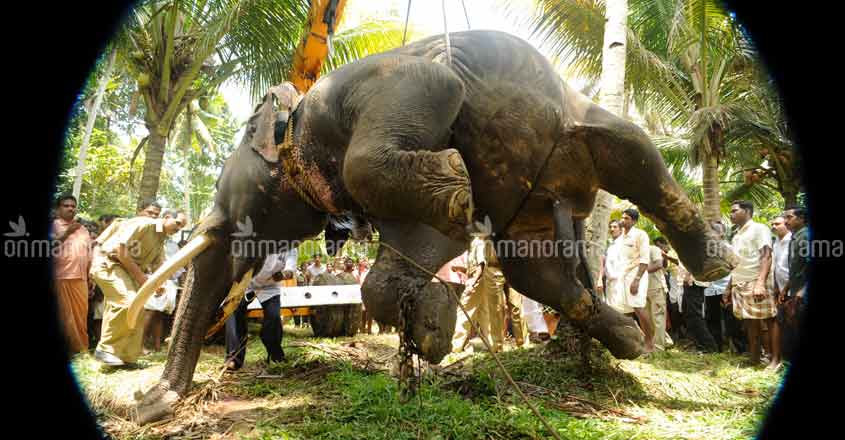The revenge of the dead jumbo

Mail This Article
Thiruvananthapuram: Captive elephants lead a miserable existence. They are beaten, speared and clubbed into submission. They are made to work without rest and water. They are kept in chains, and are starved. No wonder they die young. And this year, more than ever before. But in death, these beasts turn the tables. The dead ones make their owners pay.
It is said elephant owners have to spend a fortune to cremate their dead beasts. The last rites of a captive elephant will leave its owner poorer by nearly Rs five lakh. Getting rid of a captive elephant corpse is not as simple as disposing of the body of a cat or a dog. It is a logistical nightmare.
Elephants, according to a recent Forest Department circular, have to be cremated inside the forest and not on revenue and private land. Govardhan Mahesh, farmer who owns three elephants, said: “First we have to inform the forest department, produce all the relevant documents, wait for a piece of forest land to be allocated, hire a JCB and crane to lift the 3,000 kg corpse into a heavy vehicle and then transport the corpse to the nearest forest.”
In most of the cases, this would mean more than a day of waiting, a rotting corpse and a travel of more than 50 km. The owner will also have to pay a rent for the two or three cents on which the body will be cremated.
Read: Is Kerala's famed jumbo 'sukhachikitsa' an elephantine blunder?
Post-mortem is conducted after the corpse reaches the burial ground. Veterinarians will conduct the autopsy, but specialists should be brought in to ‘butcher’ the elephant's parts for the convenience of the vets. “It is a highly specialised activity and there are only two or three teams in the state. And they charge at will,” said Mahesh
But it is not easy for the ‘butchers’ either. “Invariably the carcass will be rotting and we vomit our guts out before starting work,” said Kuttayi, a ‘butcher’. “At times the stench is so unbearable that some of my workers had lost their consciousness.”

The cremation takes place after the autopsy. For this, over 15 tonnes of firewood, 50-odd tyres and 10-15 litres of kerosene are required, which too has to be transported from outside. The burning of the corpse is done by tribals who charge anywhere between Rs 25,000 and 30,000 for the work.
Simply burying the carcass, like it is done in the case of cats and dogs, would have been cost-effective. “But there are strange superstitions surrounding an elephant corpse, especially in the northern parts of the state. So, as a rule, the carcass has to be burnt,” a top Forest Department official said.
One ancient belief that people still hold on to is that the mucus from the carcass would cause leprosy. Another is the belief that elephants are immortal. So in olden times, when a rogue tusker is killed, tribals insisted that the body be set to flames to smoke out the last bit of life remaining. The belief might have died, but the practice has survived.


